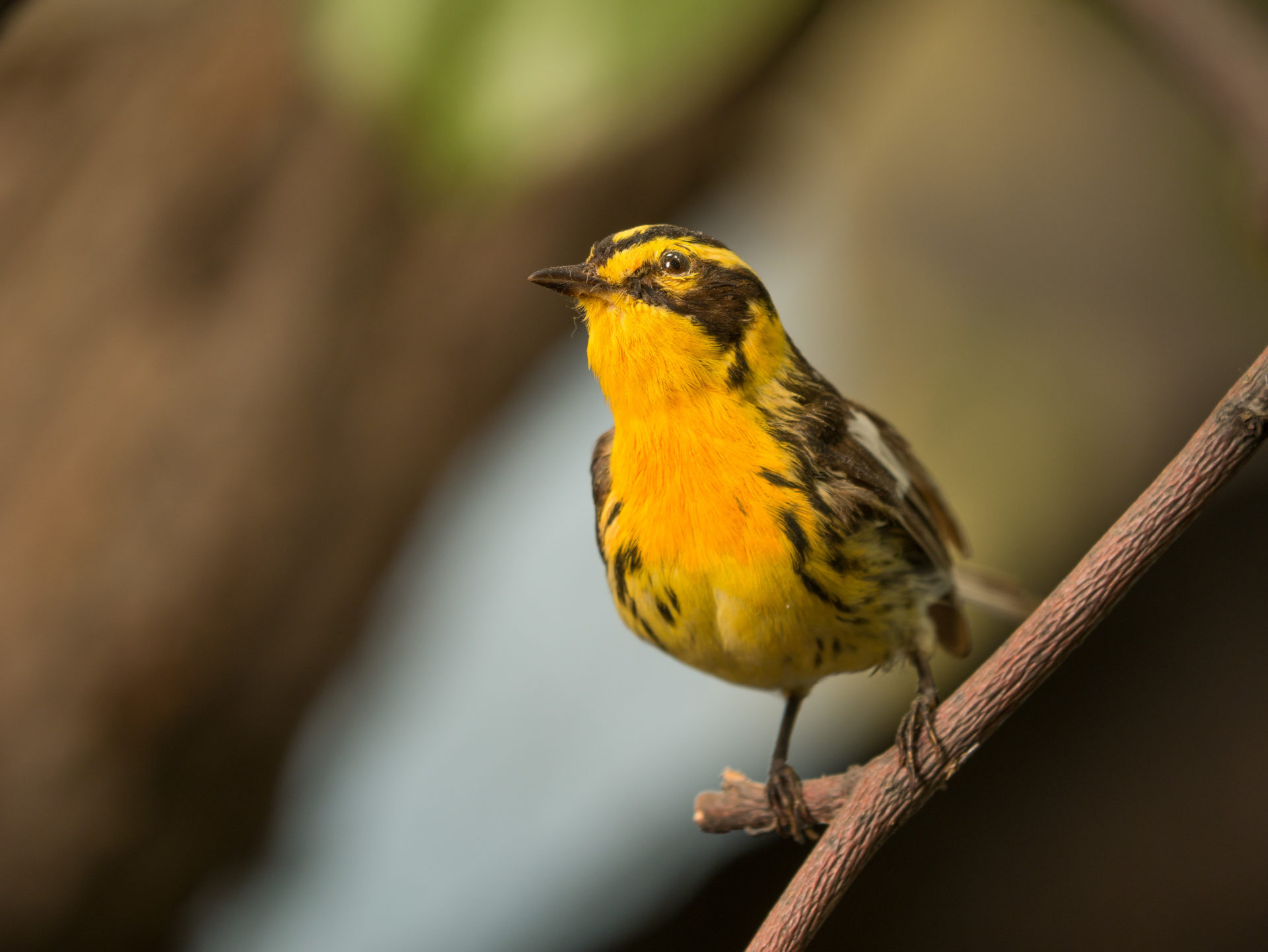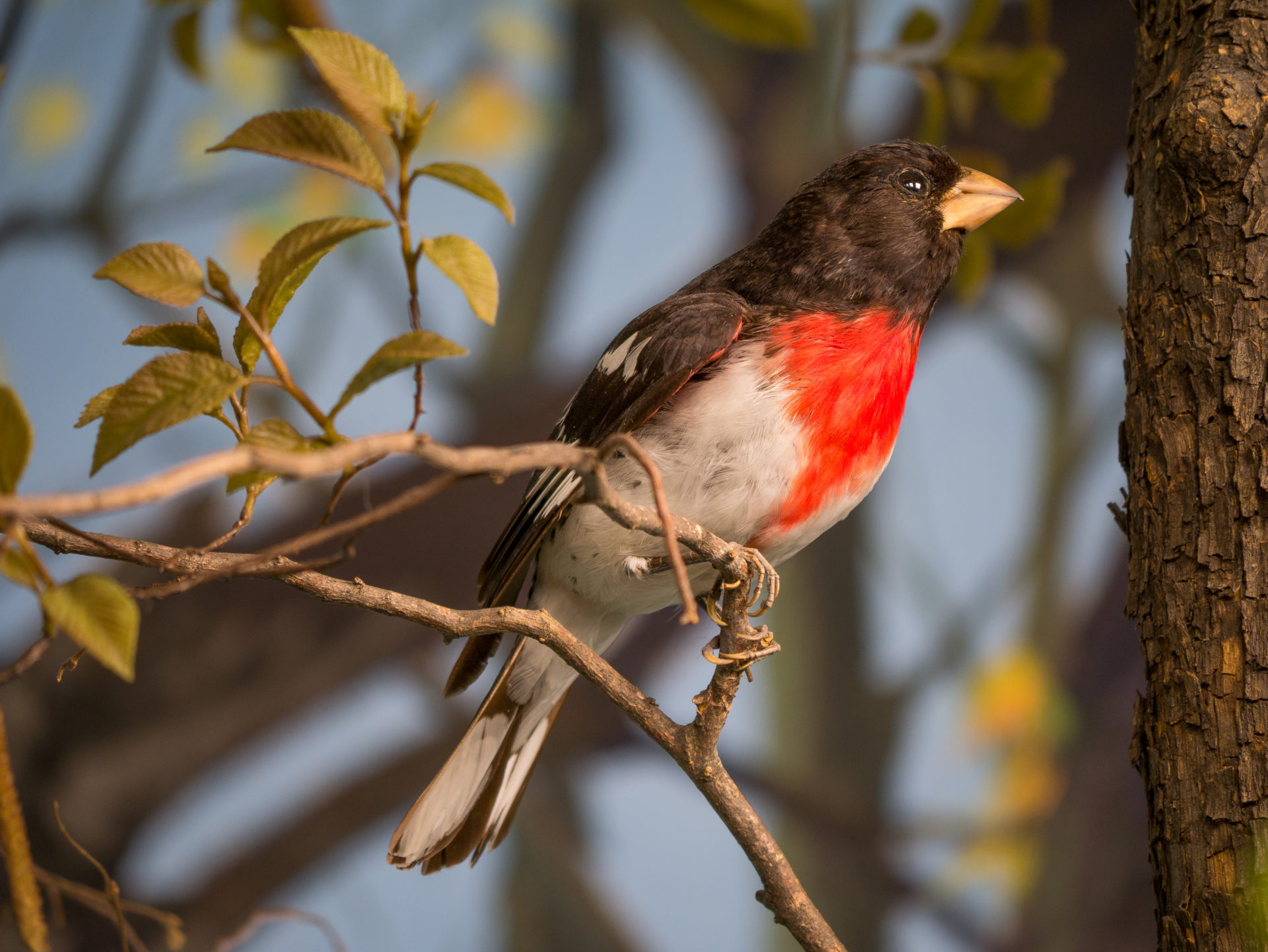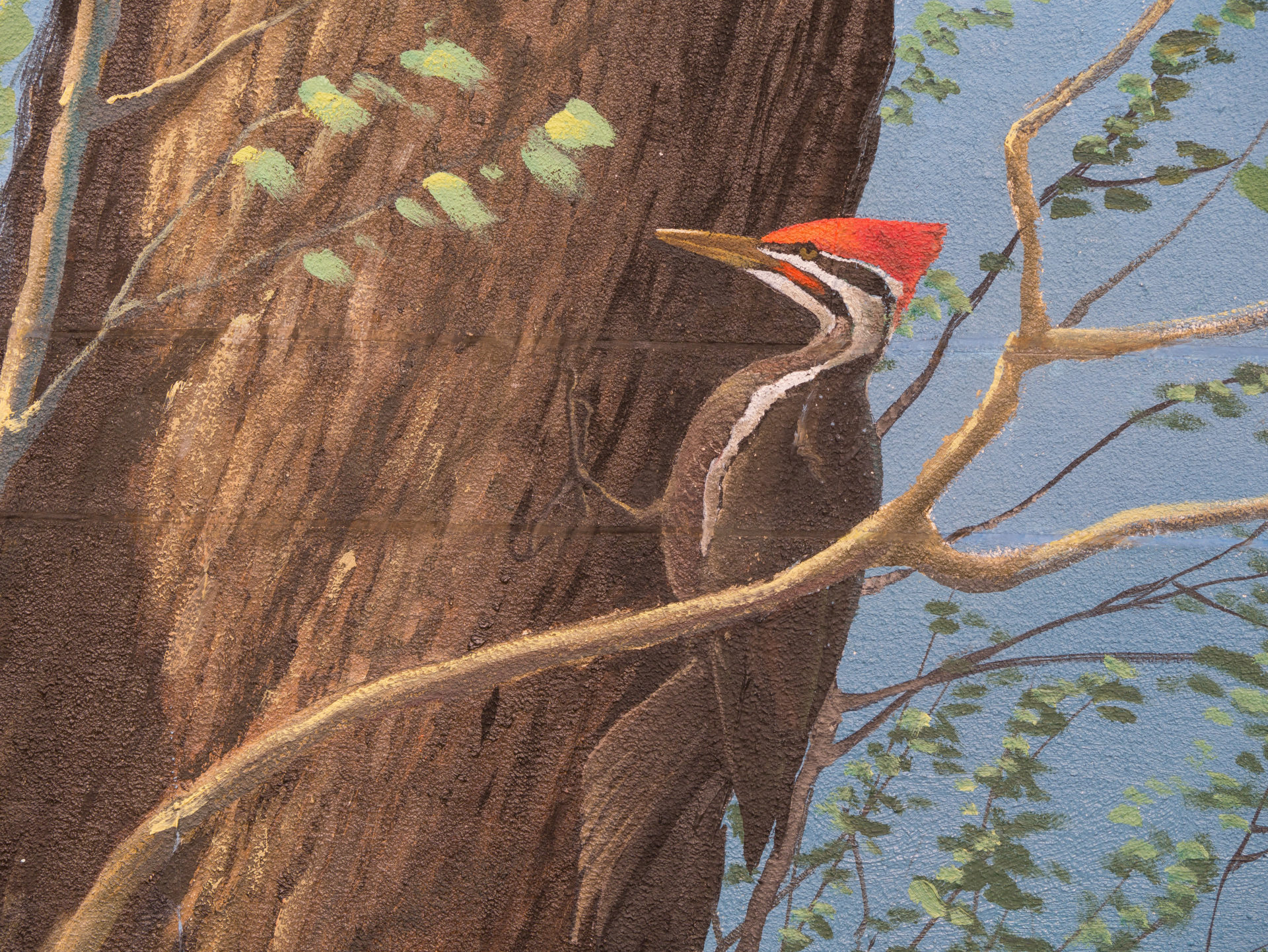
Diorama Spotlight: Big Woods
Published05/28/2020 , by Adam Hartman, gallery programs assistant
During early European settlement of this continent, French traders referred to the more than 2,000 square miles of hardwood forest in what is now south-central Minnesota as the “Big Woods.” Not only was the forest vast, but the trees that grew there were huge (or “big”)! Today, all that remains of The Big Woods are scattered parks and woodlots, but the patch of woods depicted in this diorama at Maplewood Park in Waseca, Minnesota, (spring 1948) remains intact.
Unlike many of the Bell Museum’s other dioramas, The Big Woods at Clear Lake does not have a central animal subject. Rather than focusing on a single species, or group of animals, this diorama’s subject is the maple-basswood forest itself, and the community of organisms that live there. One could say that the diorama focuses on the family of wood ducks, but the ducks are only one of nearly 50 species of plants, animals, and fungi depicted in the diorama—more than any of the other large dioramas at the Bell!
The huge diversity of life —and its interconnection—is brilliantly depicted in The Big Woods at Clear Lake. Without a central “star” species to steal the show, the viewer can absorb all of the detail of the forest, from one end of the diorama to another, which creates a cohesive, tangible environment that feels especially real. Each specimen contributes its own story to the larger narrative, much like real life where organisms have their own niche, or role in their environment that connects them to others and keeps the ecosystem healthy.

Wood duckling
On the left side of the diorama, a chipmunk forages near the roots of a large basswood. From that same tree, a family of wood ducks emerges from their cavity nest. Seven ducklings exit the nest for the first time, and make the great jump to the forest floor where mom waits, patiently. Together, they will follow her down to the lake where a great blue heron wades along the shore. Pileated and red-bellied woodpeckers chisel for grubs in the tree bark, while migratory warblers and other songbirds forage for buds, seeds, and insects in the branches above.
Nourished by the snow melt and decaying leaves from the previous fall, spring ephemeral flowers burst from the soil. Trilliums, violets, and bluebells bloom to attract pollinators and spread their leaves wide to gather as much sunlight as they can before the dense canopy fills in. On the forest floor to the right, one of the earliest butterflies to appear, a mourning cloak, rests on a decomposing log covered in moss, black ums, and scarlet cup mushrooms. Basswoods and sugar maples begin to leaf out, bridging the gaps in the canopy and blanketing the forest floor in shade.
Dioramas act as time capsules of the natural world. They depict scenes from real-life locations at specific points in time; however, after 70 years of preservation this diorama speaks particularly well to the importance of natural history collections. The space and time it depicts serve as a crucial reminder of the changes that have taken place in the time that has passed since its construction in 1949. At that time, mid-May saw the arrival of migratory songbirds, tree leaf-out, and early blooms. In 2020, these same seasonal events take place weeks earlier, in April as a result of rising global temperatures. Being able to compare species and ecosystems across time gives us great insight into our (human) effects on the environment. The preservation of specimens and scenes like these helps us gauge our impacts and make the changes necessary to protect the natural world.
Location: Maplewood Park, a Waseca city park, Waseca County, Minnesota
Biome: Eastern deciduous forest, hardwood forest
Date depicted: Early May 1948 (with climate change the spring ephemeral plants on the forest floor now blooms weeks earlier in April)
Date completed: 1949 (painted in 1948)
Dimensions: 10’ x 20’
Background Artist: Francis Lee Jaques, 1948
Foreground Artist: John Jarosz, plant models by Ruth Self and Dorothy Meirow
Season: Spring leaf out
Donors: Founding Donor – A gift of Miss Constance Everett in honor of her father, Mr. Edward A. Everett, an ardent amateur botanist and ornithologist; Donors of 2018 Restoration – Diorama Legacy Society
Restoration 2017: Midwest Art Conservation Center, Chase Studios, Museum Professionals, Split Rock Studios







